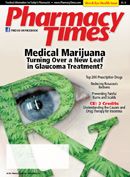Publication
Article
Pharmacy Times
Skin & Eye Health Watch
Macular Edema Unrelated to Thiazolidinedione Use
Patients with type 2 diabetes who take thiazolidinediones to treat insulin resistance do not have a greater risk of developing macular edema, according to a substudy of the Action to Control Cardiovascular Risk in Diabetes (ACCORD) trial. This class of drugs increases fluid retention, and had been linked to macular edema in previous studies.
Published in the March issue of the Archives of Ophthalmology, the ACCORD Eye Substudy examined 3473 individuals with type 2 diabetes for macular edema and retinopathy. Of this study group, 695 patients had taken thiazolidinediones (eg, pioglitazone and rosiglitazone) for at least 3 months, and 217 were diagnosed with diabetic macular edema. Even after adjusting for age, sex, ethnicity, and duration of diabetes, the researchers did not find a significant correlation between use of thiazolidinediones and macular edema.
A positive correlation did exist between thiazolidinedione use and slightly greater visual acuity, which lead author Walter T. Ambrosius, PhD, and colleagues described as “of uncertain clinical significance.”
Nonmelanoma Skin Cancers Reach Epidemic Levels
A new study published in the March issue of the Archives of Dermatology reports that the overall number of procedures to treat nonmelanoma skin cancer (NMSC) rose 76% among Medicare patients between 1992 and 2006. Lead author Howard Rogers, MD, PhD, described the increase as an epidemic that “shows no signs of leveling off.”
Dr. Rogers and his colleagues collected data from 2 Medicare databases and found that 2,048,517 individuals received treatment for NMSCs in 2006, up from 1,158,298 in 1992. NMSCs are not typically reported to cancer registries, and their incidence has been difficult to quantify before now.
The study validates anecdotal evidence from health care professionals, who report seeing more patients with skin cancers each year. The study authors attribute the increase in diagnosed NMSCs to the aging of a generation of Americans who embraced sunbathing and tanning beds and the skin cancer awareness campaigns of groups such as the American Academy of Dermatology.
Floppy Eyelid Syndrome Associated with Sleep Apnea
Patients with floppy eyelid syndrome (FES) have floppy, rubbery upper eyelids that may flip open during sleep, causing dry, irritated eyes and possible discharge.
A study led by Daniel G. Ezra, MA, MRCOphth, National Institute for Health Research Biomedical Research Centre for Ophthalmology in London, England—and published in the April issue of Ophthalmology—identified 102 patients with FES and compared them with 102 individuals from a control group. Study participants were matched for age, sex, and body mass index. Dr. Ezra and his colleagues found that 32 of the FES patients also had obstructive sleep apnea (OSA).
FES had been considered a condition that mainly affected middle-aged obese men, but the researchers found FES occurred in a wide range of demographics. These individuals often try a variety of OTC and prescription medications before the FES diagnosis is made, and the authors urge health care professionals to be aware of this association when treating patients with OSA who exhibit symptoms of FES.
Sunscreens: A Common Cause of Photoallergic Contact Dermatitis
Photoallergic contact dermatitis (PACD) is a hypersensitive skin response that occurs when light transforms certain chemical substances into allergens. For an allergic reaction to occur, a patient would have been previously exposed and sensitized to these substances. Research published in the April issue of the Journal of the American Academy of Dermatology identified sunscreen and antimicrobial agents as the most common causes of PACD over the past 2 decades.
Led by Frank C. Victor, MD, of the New York University School of Medicine, the researchers analyzed the photopatch skin results of 76 patients over a 20-year period. For the study group, suncreens and antimicrobial agents each caused 23.2% of PACD cases, followed by medications (20.3%), fragrances (13%), plants and plant derivatives (11.6%), and pesticides (8.7%).
The results also revealed that PACD reactions due to medications increased over the study period, while those caused by fragrances decreased. â–
FAST FACT: Glaucoma accounts for approximately 9% to 12% of all blindness in the United States.
âžœMore on the Web
For pharmacist-recommended products for eye and skin health, visit www.OTCGuide.net.







